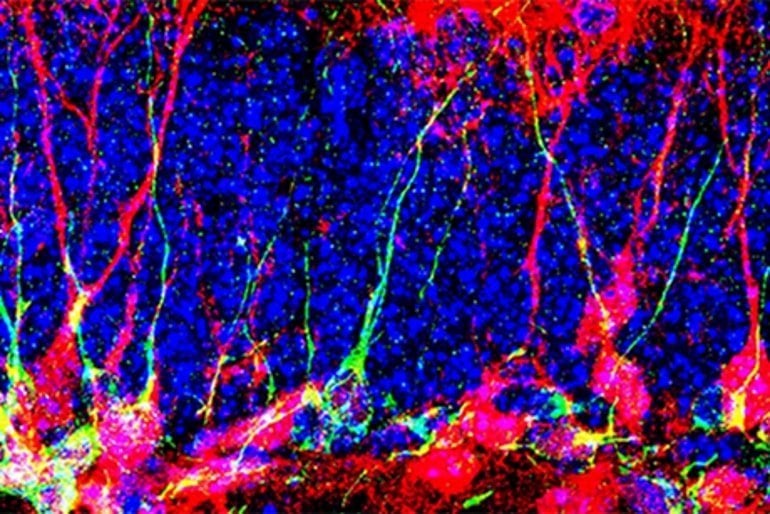Summary: After discovering the importance of cell metabolism in neurogenesis, researchers were able to increase the number of neurons in the brains of adult and elderly mice.
Source: University of Geneva
Some areas of the adult brain contain quiescent, or dormant, neural stem cells that can potentially be reactivated to form new neurons. However, the transition from quiescence to proliferation is still poorly understood.
A team led by scientists from the Universities of Geneva (UNIGE) and Lausanne (UNIL) has discovered the importance of cell metabolism in this process and identified how to wake up these neural stem cells and reactivate them.
Biologists succeeded in increasing the number of new neurons in the brain of adult and even elderly mice.
These results, promising for the treatment of neurodegenerative diseases, are to be discovered in the journal Science Advances.
Stem cells have the unique ability to continuously produce copies of themselves and give rise to differentiated cells with more specialized functions. Neural stem cells (NSCs) are responsible for building the brain during embryonic development, generating all the cells of the central nervous system, including neurons.
Neurogenesis capacity decreases with age
Surprisingly, NSCs persist in certain brain regions even after the brain is fully formed and can make new neurons throughout life. This biological phenomenon, called adult neurogenesis, is important for specific functions such as learning and memory processes. However, in the adult brain, these stem cells become more silent or ‘‘dormant’’ and reduce their capacity for renewal and differentiation.
As a result, neurogenesis decreases significantly with age.
The laboratories of Jean-Claude Martinou, Emeritus Professor in the Department of Molecular and Cellular Biology at the UNIGE Faculty of Science, and Marlen Knobloch, Associate Professor in the Department of Biomedical Sciences at the UNIL Faculty of Biology and Medicine, have uncovered a metabolic mechanism by which adult NSCs can emerge from their dormant state and become active.
‘‘We found that mitochondria, the energy-producing organelles within cells, are involved in regulating the level of activation of adult NSCs,’’ explains Francesco Petrelli, research fellow at UNIL and co-first author of the study with Valentina Scandella.

The mitochondrial pyruvate transporter (MPC), a protein complex discovered eleven years ago in Professor Martinou’s group, plays a particular role in this regulation. Its activity influences the metabolic options a cell can use.
By knowing the metabolic pathways that distinguish active cells from dormant cells, scientists can wake up dormant cells by modifying their mitochondrial metabolism.
New perspectives
Biologists have blocked MPC activity by using chemical inhibitors or by generating mutant mice for the Mpc1gene. Using these pharmacological and genetic approaches, the scientists were able to activate dormant NSCs and thus generate new neurons in the brains of adult and even aged mice.
‘‘With this work, we show that redirection of metabolic pathways can directly influence the activity state of adult NSCs and consequently the number of new neurons generated,’’ summarizes Professor Knobloch, co-lead author of the study.
‘‘These results shed new light on the role of cell metabolism in the regulation of neurogenesis. In the long term, these results could lead to potential treatments for conditions such as depression or neurodegenerative diseases’’, concludes Jean-Claude Martinou, co-lead author of the study.
About this neurogenesis research news
Author: Antoine Guenot
Source: University of Geneva
Contact: Antoine Guenot – University of Geneva
Image: The image is credited to Knobloch Lab – UNIL
Original Research: Open access.
“Mitochondrial pyruvate metabolism regulates the activation of quiescent adult neural stem cells” by Jean-Claude Martinou et al. Science Advances
Abstract
Mitochondrial pyruvate metabolism regulates the activation of quiescent adult neural stem cells
Cellular metabolism is important for adult neural stem/progenitor cell (NSPC) behavior. However, its role in the transition from quiescence to proliferation is not fully understood.
We here show that the mitochondrial pyruvate carrier (MPC) plays a crucial and unexpected part in this process. MPC transports pyruvate into mitochondria, linking cytosolic glycolysis to mitochondrial tricarboxylic acid cycle and oxidative phosphorylation. Despite its metabolic key function, the role of MPC in NSPCs has not been addressed.
We show that quiescent NSPCs have an active mitochondrial metabolism and express high levels of MPC. Pharmacological MPC inhibition increases aspartate and triggers NSPC activation.
Furthermore, genetic Mpc1 ablation in vitro and in vivo also activates NSPCs, which differentiate into mature neurons, leading to overall increased hippocampal neurogenesis in adult and aged mice.
These findings highlight the importance of metabolism for NSPC regulation and identify an important pathway through which mitochondrial pyruvate import controls NSPC quiescence and activation.







